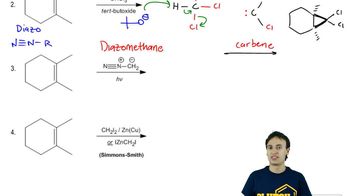After a proton is removed from the OH group, which compound in each pair forms a cyclic ether more rapidly?
c.

 Verified step by step guidance
Verified step by step guidance Verified video answer for a similar problem:
Verified video answer for a similar problem:



 2:27m
2:27mMaster Overview of the flowchart. with a bite sized video explanation from Johnny
Start learning